We may earn a commission when you click on the affiliate links in this post.
Make Panda Express Chow Mein at home in under 30 minutes! This easy, delicious copycat recipe uses simple ingredients for a perfect side dish everyone will love.
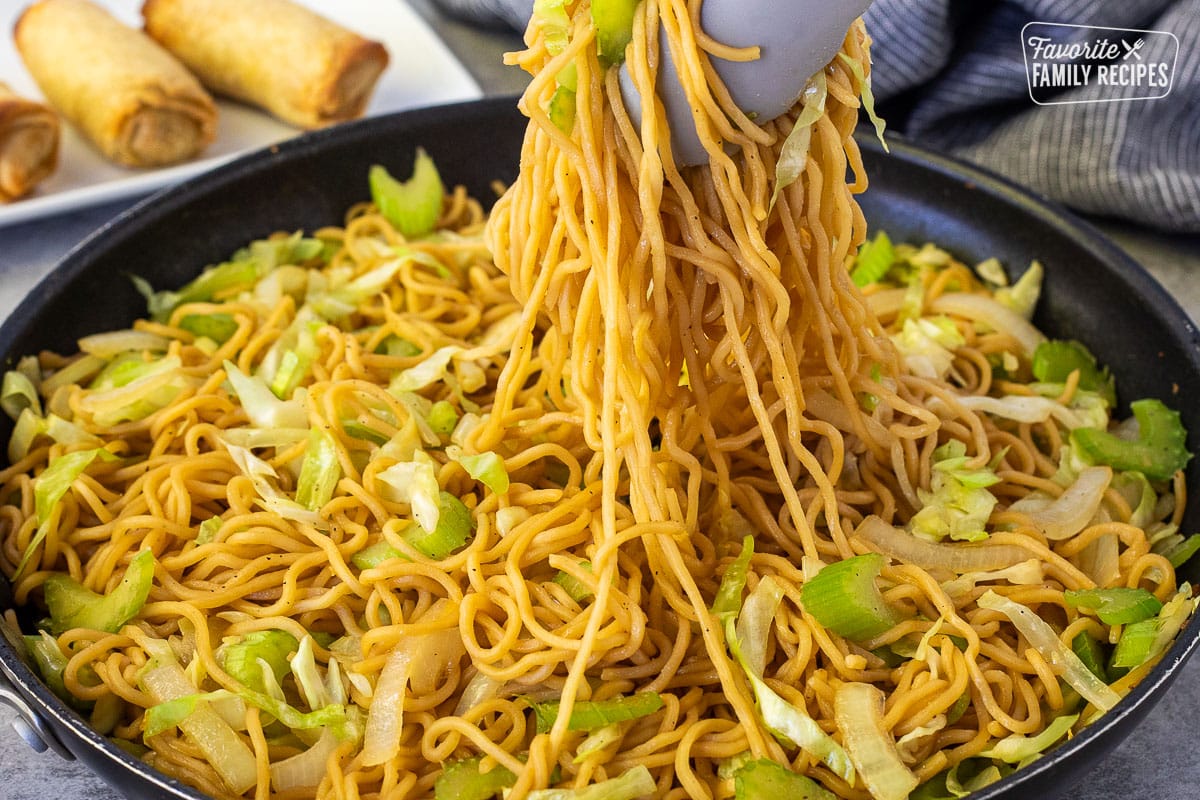
Crave-Worthy Chow Mein in 30 Minutes
Are you as obsessed with Panda Express Chow Mein as I am? I mean, it’s the ultimate sidekick to every entrée on their menu, right? Well, if you’re craving that delicious, savory goodness but want to skip the takeout, I’ve got you covered! This copycat Panda Express Chow Mein recipe is a game-changer, and the best part? You can whip it up in under 30 minutes with ingredients you probably already have in your pantry!
Let me take you back a few years. It was Christmas Eve, and we were hosting our annual Chinese takeout party. But, we weren’t near a Panda Express, and I needed enough chow mein to feed a small army (okay, just my family, but it felt like an army!). So, I decided to create my own version. And guess what? It was a massive hit! Everyone swore it tasted just like the real thing. Don’t just take my word for it—check out the comments below!
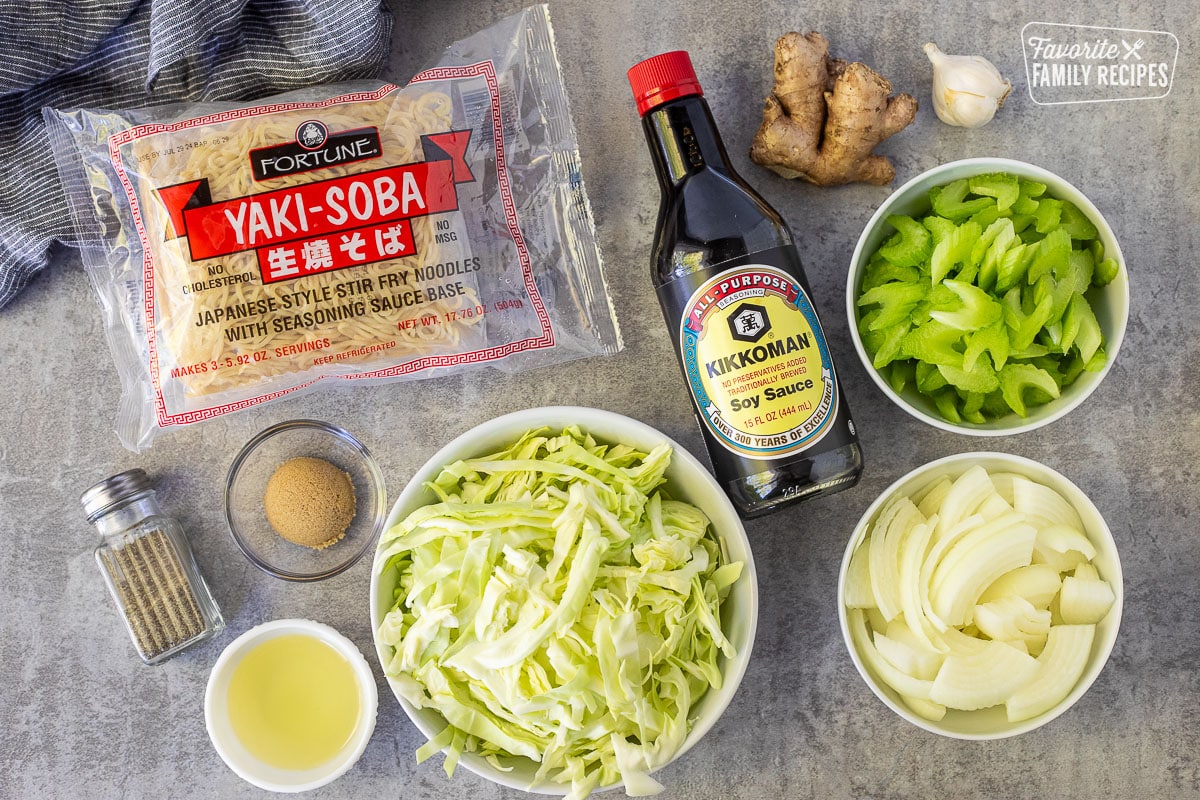
What You’ll Need for Panda Express Chow Mein
One of the reasons I love this recipe is because it’s super simple. Panda Express keeps it straightforward, and so do I! Here’s what you’ll need:
- Chow mein noodles: Prepared according to package instructions. Yakisoba, lo mein, or even undercooked ramen noodles work well too.
- Onion (white or yellow onion)
- Celery
- Cabbage
- Chow Mein Sauce
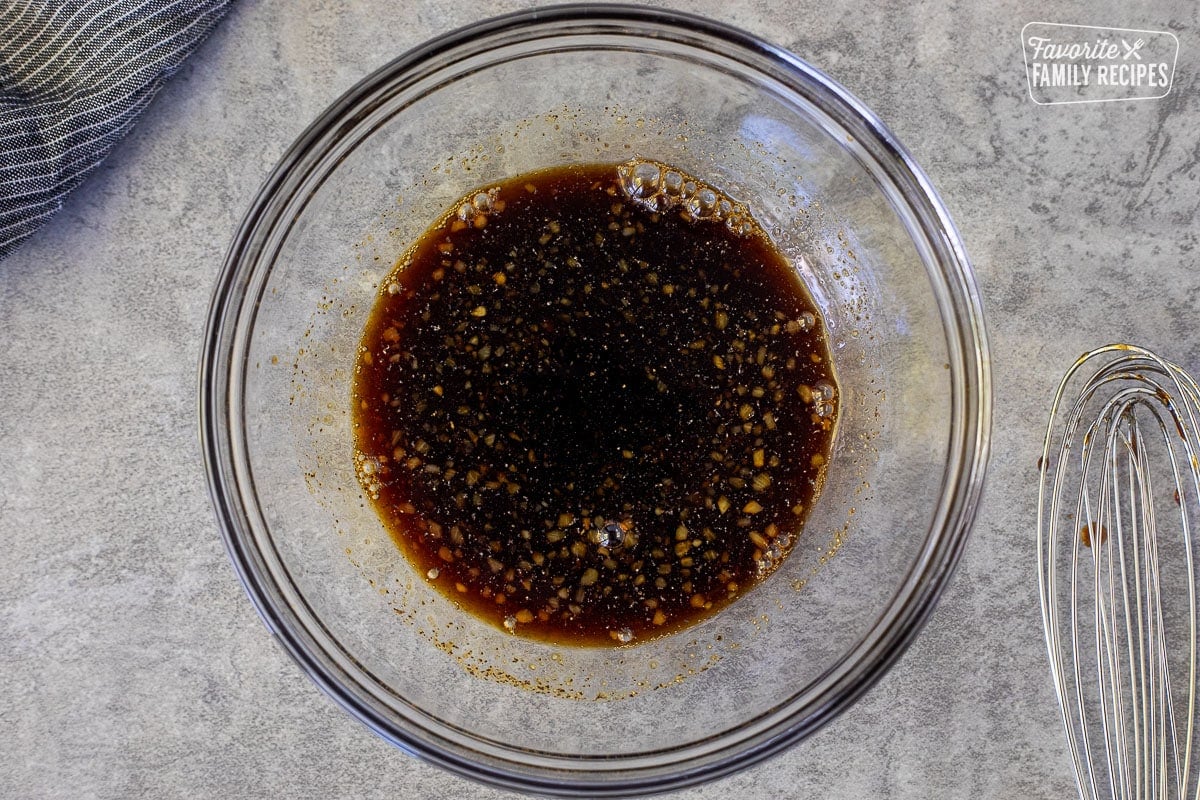
Ingredients for the Chow Mein Sauce:
This chow mein sauce uses only a few simple ingredients:
- soy sauce
- brown sugar
- garlic
- ginger
- black pepper
Want to add a twist? A dash of oyster sauce or a splash of Chinese cooking wine can take the flavor up a notch. For those who prefer a saucier dish, double the sauce recipe and stir in a bit of chicken broth. Heat it up, thicken with cornstarch, and voila!

Chow Mein vs. Lo Mein: What’s the Difference?
Ever wonder what sets chow mein apart from lo mein? The biggest difference is that one is stir-fried and the other is tossed in sauce. Here’s the lowdown:
Chow Mein:
- Translation: “fried” or “stir-fried” noodles.
- Preparation: Parboiled, then stir-fried until crispy.
- Texture: Slightly crispy, a bit oily, not easy to slurp. Some think that chow mein noodles are strictly crunchy, deep fried noodles, like the kind that comes in a canister, but that is only one type of chow mein noodle. The most common kind of chow mein noodle is the stir-fried kind, like what they use at Panda Express.
- Sauce: Minimal sauce.
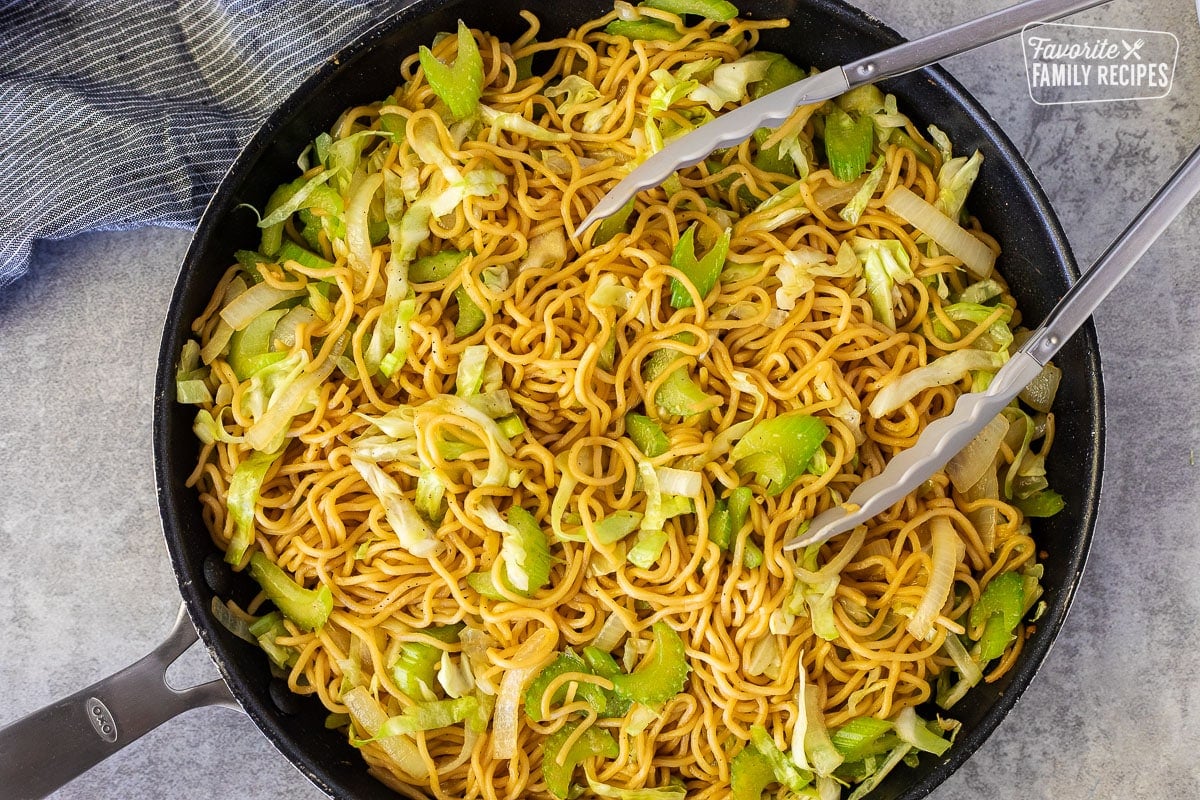
Lo Mein:
- Translation: “tossed” noodles.
- Preparation: Boiled until soft, then tossed with sauce.
- Texture: Soft and slurpable. It feels similar in texture to a spaghetti noodle.
- Sauce: More sauce than chow mein.
Some might argue that Panda Express chow mein is actually lo mein, but based on the stir-fried texture and minimal sauce, it’s definitely chow mein. Trust me, the “slurp test” doesn’t lie!
Now, can you make this recipe a lo mein if you wanted to? Absolutely! It is DELICIOUS as a lo mein! Just boil up your noodles separately and double the sauce. Toss together and serve.
Choosing the Best Noodles
The beauty of this dish is its versatility. Yakisoba noodles are my go-to for the perfect texture, but dry lo mein, ramen, or even spaghetti will do in a pinch. Just remember to stir-fry them for that signature chow mein vibe.
Pro Tips for Perfect Chow Mein
- Leftovers: Store in an airtight container in the fridge for up to 5 days. Reheat on the stovetop, in the microwave, or in the oven.
- Pan Choice: Use a large wok or deep non-stick pan for easy stir-frying.
- Flavor Boost: A touch of sesame oil can add depth, but use sparingly to avoid overpowering the dish.
- Veggie Variations: Feel free to toss in your favorite veggies like carrots, pea pods, or broccoli for extra crunch and color.

Storing and Reheating Chow Mein
Got leftovers? Lucky you! Cool your chow mein to room temp, then store in an airtight container. It’ll keep in the fridge for 4-5 days. When reheating, add a splash of water or sauce to maintain moisture. Heat in the microwave, stovetop, or oven, and enjoy it all over again! In the oven, cover with foil and bake at 350°F for 20-30 minutes. Keep an eye on it to prevent overcooking.
More Panda Express Recipes to Try
Pair this chow mein with some of our other favorite Panda Express-inspired recipes like Kung Pao Chicken, Chinese Barbeque Pork or any of these other Panda Express recipes:
Orange Chicken
Mushroom Chicken
String Bean Chicken
Ham Fried Rice
Ready to bring the taste of Panda Express to your kitchen? Give this recipe a try and let me know how it turns out. Happy cooking!

Panda Express Chow Mein (Copycat)
Video
Equipment
Ingredients
- ¼ cup soy sauce
- 1 tablespoon brown sugar
- 2 cloves garlic, minced
- 1 teaspoon grated fresh ginger
- ground black pepper, to taste
- 2-3 tablespoons vegetable oil
- 3 (5.6 ounce) packages Yakisoba noodles or Chinese Egg Noodles (Found in the produce section of the grocery store. Usually, the 3 packages are sold together in one 17oz. pack)
- ⅔ cup celery chopped diagonally
- 1 medium onion, thinly sliced
- 2 cups chopped cabbage
Instructions
- In a small bowl, combine soy sauce, brown sugar, garlic, ginger, and black pepper. Set aside.

- Remove noodles from packages and discard included flavoring packets. Rinse noodles well, drain, and set aside.
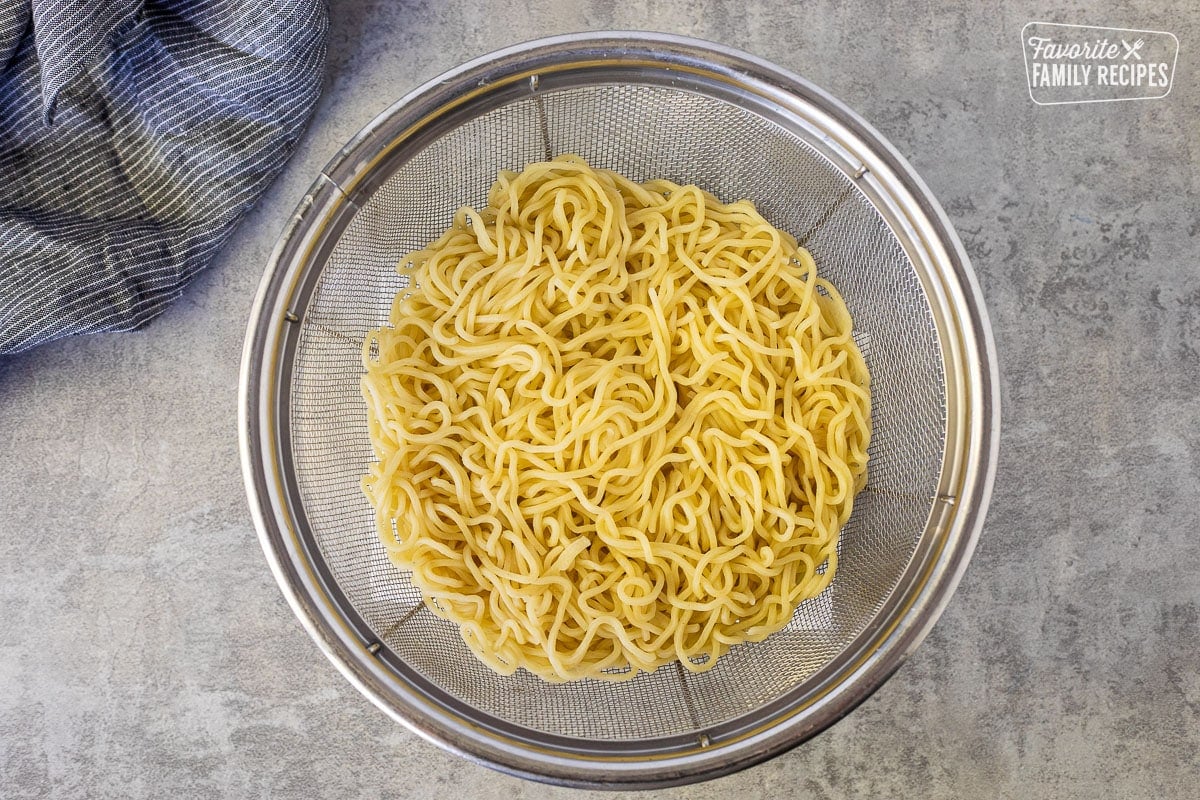
- Heat oil in a large wok or skillet over medium heat. Add celery and onion and sauté for about 1-2 minutes or until onions start to become soft and transparent. Add cabbage and sauté an additional minute.
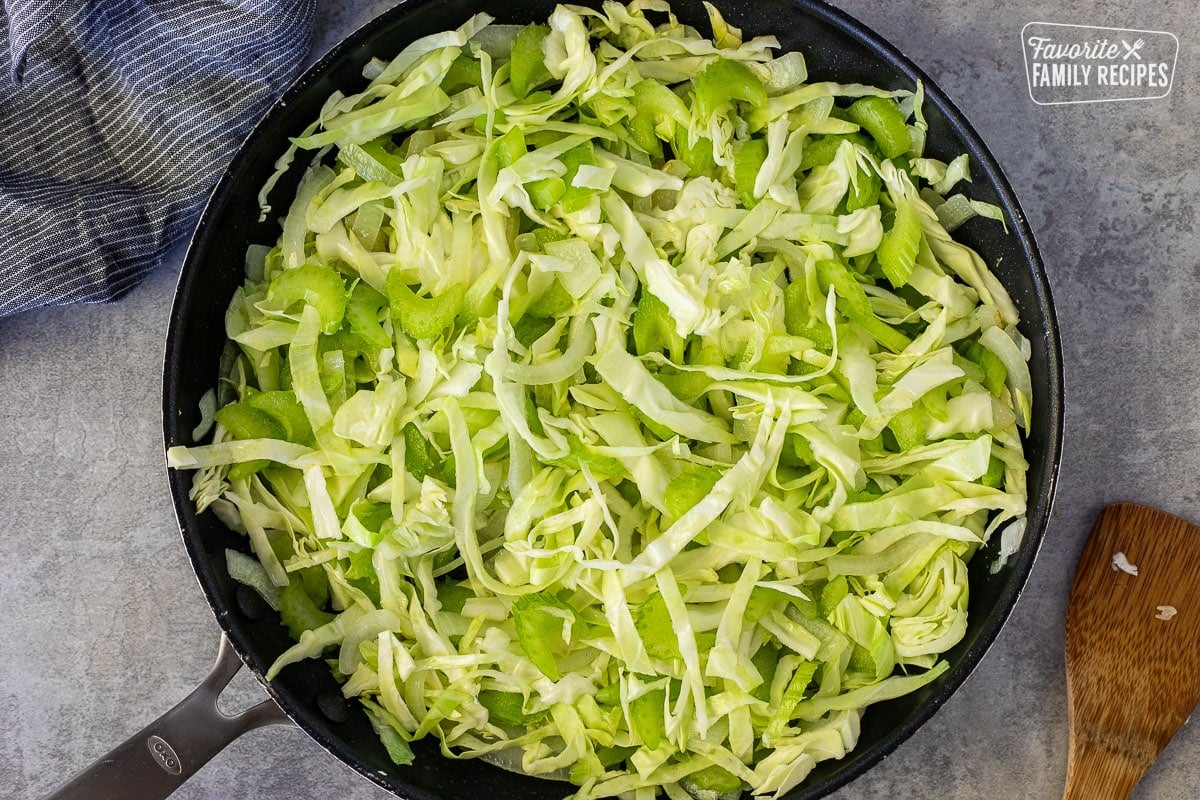
- Add noodles and soy sauce mixture to the vegetables. Stir-fry over medium-high heat for an additional 2-3 minutes or until noodles are heated through.

Notes
- In this recipe, you can add a shake or two of sesame oil to the vegetable oil to add a deeper flavor, but don’t overdo it! I am not including it in the recipe because the sesame oil flavoring can become overpowering really quickly if you aren’t careful. I have made it both ways (with and without sesame oil) and they both taste great.
- Don’t overcook the noodles. Overcooking them can cause them to break. You want them to be just heated through.
I think this is a perfect copycat. The others are lacking flavor.I used the ramen refrigerated noodles which I like better.
Thank you for your comment! I’m glad you liked it!
I don’t understand about the noodles. It says to rinse the noodles well. Do you cook them and then rinse them well? Or do you just rinse the dry noodles? Do you rinse them with hot or with cold water? It seems like you’d have to cook them first. I would love to try this recipe but I just don’t understand about the noodles. Please explain.
The noodles aren’t dry when you get them in the refrigerated section. You will see that they are in a package and already pretty soft They just need to be rinsed under water for eh noodles to separate from each other. They aren’t hard noodles like dried ramen. Hope this helps!
Rinse after their cooked to stop the cooking process, then the noodles aren’t overdone by the finished product
I always think of Chow Mein as a take out meal we got 1 or 2 times a month. For one order, you got a bag of fried noodles and a small container of steamed white rice. Then in a larger container we got a thick sauce made with ground pork and chopped Celery and what ever flavors they put in the sauce. When you ate it you put the fried noodles on your plate and put the rice next to the noodles. Then you spooned the sauce over the noodles and Rice. Sometimes if you ordered chicken Chow Mein it still had the ground pork in it, but you’d get a little package of Shredded Chicken and some places gave you an even littler package of egg strips. I wish I had a recipe for the sauce that went over the noodles. That was take out Chow Mein.
That sounds delicious! Thanks for sharing!
Thanks for sharing this!!!! My husband loves Panda express’s chow mein, so we were trying to find the recipes. And I found yours!
I just tried to made it for our dinner tonight, and my husband LOVES it.
Thank you so much for your recipe!!!
I am so glad he liked it! Thanks for taking the time to come back and leave a comment! We have lots of Panda Express recipes so if you need more, we can help you out 🙂
Very good, easy, satisfying recipe.
What brand soy sauce do you use?
Kikkoman Soy Sauce is our go-to!
OOoops. *I meant don’t discard the noodle seasonings packages..
Great. I use this recipe all the time.
But don’t discard the noodle packages. You can use them sparingly to sprinkle on anything in other recipes!
I also add chicken and other veggies, from time to time, like peas and carrots,
But your ingredients are spot on. Thanks.
I did this recipe with ramen noodles turned out amazing super easy!
Loved this recipe. Sadly I forgot to rinse my noodles which led to them clumping – so everyone, DO NOT FORGET TO RINSE THEM. Otherwise would have been great.
Love it
So every Chinese menu is backwards? Lo mein has noodles. Chow mein does not. This recipe does sound good and fairly simple to make Lo mein at home.
Panda Express calls their noodles Chow Mein, Lo Mein does not appear on their menu.
I lived in Japan a total of 7 years. I ate at many Japanese and Chinese Restaurants. Growing up in the U.S. I always ordered Chow Mein. When I asked for it there, I was told they didn’t have any because it was an American Dish! I made recipes for all the foods I loved there. I’m still adding this Chow Mein recipe to my “Oriental Recipes”. Thank you for a great recipe 🙂